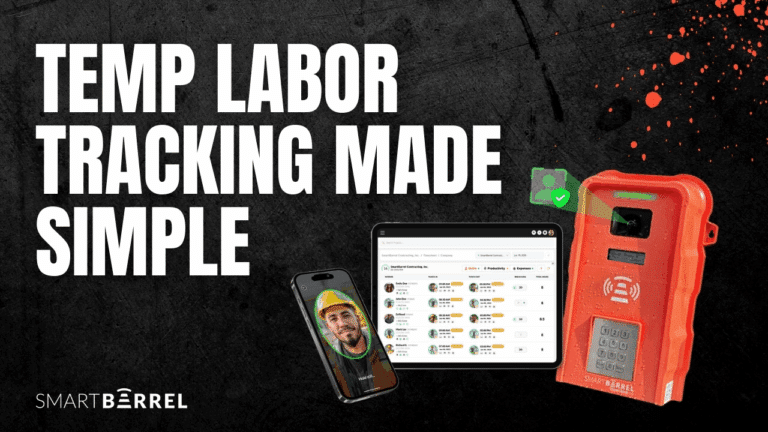Starting a construction project involves navigating an unpredictable development process. Because the construction sector must make rapid adjustments when material expenses fluctuate and project requirements change, time and materials contracts serve as essential tools. There are various types of construction contracts, but time and materials contracts stand out for their flexibility. They allow for adjustments based on project needs and promote transparency by keeping stakeholders informed through detailed cost tracking and open discussions.
Under time and materials contracts, companies pay directly for the actual workforce hours and materials used in a project. The time and materials contract setup provides construction contractors and clients with the means to update their plans quickly in response to emerging project issues. T&M contracts allow project requirements to change naturally without requiring complex contract modifications.
Under T&M agreements, workers get fair payments while the contract keeps track of all costs clearly. Clear project finance details build stronger trust among all stakeholders while simplifying cost predictability and financial oversight.
The growing complexity of construction projects requires flexible budgeting and resource allocation, making T&M contracts increasingly essential. The contract system empowers building teams to effectively address challenges like cost overruns and schedule delays in modern construction. Through this article, we will explain how time and materials contracts transform construction projects by adding more adaptability and openness, which promotes joint teamwork in dynamic work settings.
What Is a Time and Materials Contract?
Under a T&M contract, construction companies are paid for the actual hours worked plus the cost of materials used in the project. Under this flexible contract, you can adjust your project activities as they progress. In contrast, fixed-price contracts require you to stick to the same expenses regardless of any new developments.
The construction sector relies on fluctuating factors such as labor, materials, and project scope, making time and materials contracts a practical solution. This arrangement allows project teams to make necessary work changes without requiring contract modifications. T&M contracts are ideal for projects that must adapt to client needs, regulatory updates, or unexpected on-site changes.
T&M contracts require full records of work time, payments per hour, and material expenses. Contractors receive fair payment when they provide clear records of labor costs, material purchases, and equipment expenses, allowing clients to track their investments at every stage. Detailed expense reporting builds trust between parties and helps supervisors oversee cost allocation and budget adherence, making T&M contracts ideal for projects that require transparency.
Many construction firms rely on T&M contracts to handle unpredictable labor and material costs more effectively. Project expenses fluctuate, and these price changes can disrupt budget and schedule discipline under fixed contracts. T&M contracts help businesses absorb cost variations while maintaining better control over timelines and financial planning.
T&M contracts improve project outcomes by enhancing accountability and allowing flexible responses to changes. They help both parties progress smoothly by adapting to unexpected building issues rather than enforcing rigid cost constraints. These contracts are increasingly favored in the construction industry because they balance financial oversight with adaptability, ensuring project success while maintaining transparency.
The Need for Flexibility In Construction Projects
The construction sector needs adaptable operating practices because each project has unique requirements and challenges. Unlike other industries, construction projects frequently undergo blueprint modifications, client-driven adjustments, and regulatory changes, along with material shortages and weather disruptions. These shifting variables demand flexible contract management, as fixed-price contracts often slow progress and drive up costs.
T&M contracts provide the flexibility projects need to manage shifting requirements efficiently. These contracts allow billing adjustments based on actual labor hours and material costs as the project progresses. Contractors can quickly resolve unforeseen problems without disrupting project outcomes or schedules.
Under T&M conditions, projects evolve more seamlessly since minimal renegotiation is needed to make changes, reducing both time delays and expenses. Through this payment system, contractors can quickly rework the project deliverables and evaluate alternative suppliers, explore material substitutions, or optimize costs to maintain progress toward finishing on time. The ability to adapt remains vital both to handle costs better and to keep work moving when difficulties arise.
Under T&M conditions, projects adapt smoothly since minimal renegotiation is required, preventing workflow disruptions and reducing both delays and costs. This payment system allows contractors to revise project deliverables as needed and source alternative materials or suppliers to keep progress on track for timely completion. The contracts help project teams manage work ahead of time by letting them spot upcoming challenges and take fast corrective actions.
T&M contracts prove essential to construction companies because they help businesses adjust freely to changes. In this system, contractors, clients, and subcontractors feel protected while working through unexpected shifts without losing money or stability in operations. Current construction projects rely on flexible contracts because they handle many variable factors during development. T&M agreements help projects reach successful completion by allowing adjustments based on evolving project requirements.
Get Control of Your Time Tracking
Transparency: A Key Benefit of T&M Contracts
Time and materials contracts benefit the construction field above all others because they provide essential transparency. Time and materials contracts reveal exactly what employees earn per hour, along with their work hours and the precise costs of project materials, unlike fixed-price contracts. The detailed financial reporting in T&M contracts enables clients to watch their spending while building better contractor relationships.
Accurate billing and prevention of payment issues happen when time logs and material receipts identify true expenses. Under T&M contracts, clients can watch both the project development and its expenses as they happen. Regular project assessments help you identify problems sooner, allowing you to adjust scheduling or shift deadlines to maintain project timelines.
Under T&M contracts, stakeholders must fulfill their roles to collaborate effectively. When teams have full visibility into project details, they coordinate more efficiently to meet project objectives. Improved teamwork ensures smoother project execution and better results. Time and materials contracts require clear visibility to become an essential part of construction project management.
Advantages of T&M Contracts for Construction Projects
Time and materials contracts offer several advantages that make them widely adopted and favored in construction projects. The contracts follow real-time data from workers’ time and materials used, allowing costs to adjust dynamically in response to project changes. The construction industry needs flexible project management methods since conditions can be unpredictable.
Flexibility for Unpredictable Scenarios
In construction work, projects can change quickly, so the natural adaptability of T&M contracts helps by adjusting costs, timelines, and workforce needs as conditions evolve. Under T&M contracts, teams can react to various unexpected changes, including price fluctuations for materials, unpredictable weather conditions, or design modifications.
T&M contracts demonstrate clear advantages when dealing with change by updating project terms without the extensive negotiations required for fixed-price agreements. Projects proceed smoothly because T&M contracts allow instant changes without waiting. The construction process stays on track with T&M contracts because quick adaptations minimize disruptions and reduce downtime, keeping projects moving forward without unnecessary delays.
Through T&M contracts, project managers can maintain quality standards by ensuring consistent material use, effective labor oversight, and adherence to project specifications throughout the entire project period. Under a T&M contract setup, contractors can make fast decisions that benefit the project’s progress. Quick adaptability to cost adjustments, scheduling shifts, and material selection changes lets contractors deliver work that meets both specifications and quality expectations throughout the entire build process.
T&M contracts reduce both time investment and project expenses by letting teams make swift adjustments that preserve project quality, which makes them crucial for handling construction projects today.
Transparency in Cost Management
Time and materials contracts stand out in construction because they make costs completely transparent. A time and materials contract provides complete financial clarity for projects by recording all expenses, including wages, raw materials, and other costs. Clients can see all their spending details, which lets them stay well-informed and decide or make changes without problems.
Time tracking and billing records serve as essential proof points under Time and Materials agreements. Through these official documents, clients can see exactly how their budget is spent on the finished work and the resources taken. Keeping billing processes open leads to precise payment records and lowers the risk of payment disagreements. When clients understand all their charges, it enhances trust and simplifies project negotiations and approvals.
By displaying resource distribution openly, this system prevents disputes caused by resource allocation misunderstandings. The open sharing of project resources and budget data in T&M contracts builds a reliable setting for stakeholders to see fair handling of all financial operations. Transparency forms the basis of trustworthy business connections and guides teams to finish work projects effectively while meeting everyone’s expectations.
Fair Compensation for Contractors
Under a time and materials contract payment system, contractors earn money based on actual labor hours and materials used. The approach works best because it directly ties contractor pay rates to their actual work output and material consumption. Through this payment system, contractors stay protected from financial harm when projects expand unexpectedly and initial budgets prove incorrect.
Under T&M contracts, contractor payments are linked directly to work quality and resource consumption. Since contractors earn money directly from their work results and resource handling, they naturally strive for efficient execution that stays within scope and meets quality standards. Under this arrangement, contractors stay on task because they are accountable for their work performance and use project resources properly.
Better Handling of Evolving Project Scopes
Time and materials contracts serve projects well when initial requirements are unclear or subject to regular changes. Custom building and renovation projects often require modifications due to client requests, structural adjustments, or material availability, and T&M contracts allow project teams to respond to these changes effectively. The construction team can adjust labor allocation and material usage throughout the project to optimize scheduling and prevent waste.
T&M contracts reduce project risk from resource delays and help project managers do their jobs better. The T&M contract approach helps us meet project timelines and budget requirements while effectively managing shifting project scopes.
Improved Client-Contractor Collaboration
T&M contracts improve collaboration between client and contractor teams by enhancing communication, decision-making, and transparency. Trust and adaptability in these contracts foster open communication by providing cost transparency and flexibility in scope adjustments. Two parties under this setup can discuss current problems openly, free from financial uncertainty or rigid contract terms, allowing them to make collaborative project decisions that improve efficiency and quality.
By using T&M contracts, teams improve project performance through faster adjustments, reduced cost disputes, and better alignment on desired outcomes and shared targets.
Reduced Risk for Clients
T&M contracts protect clients from cost overruns by controlling labor expenses, material cost inflation, and unnecessary spending through their structured payment system. Clients benefit from better budget control, with fewer cost overruns and improved financial forecasting, since they pay directly for completed work and materials used on their projects. Under this time and materials payment system, clients avoid fixed payments since project charges adjust based on work progression and resource usage.
Real-time expense tracking and labor cost data help project managers identify and resolve spending issues immediately. Regular monitoring lets project managers keep expenses under control by preventing unnecessary costs and ensuring proper spending through cost tracking and budget adjustments throughout the project term.
Get Control of Your Time Tracking
Limitations of T&M Contracts and How to Address Them
Although time and materials contracts provide valuable advantages, they also present challenges such as budgeting risks, potential inefficiencies, and increased supervision demands. These agreements enable open billing records and flexible management but introduce problems that affect project results. Through strong planning and management practices, stakeholders can reduce T&M contract challenges and make the most of this contract type.
Potential for Budget Overruns
The biggest problem with T&M contracts is that it is difficult to determine the total costs before starting the project. Budget overruns appear more likely because project payments depend on real-time labor and material usage, especially when project details shift without warning. To keep clients informed on costs, contractors should offer initial budget projections and send regular updates on the project spending. The contractor’s regular reporting on project finances helps clients know their status in real time so they can adjust project requirements and budget accordingly.
Inefficiencies in Execution
T&M contracts can lead to inefficiencies in labor and material use unless strict control measures are established. Excessive spending of working hours alongside unnecessary material consumption creates risks that increase costs and prolong the project schedule. To fix these inefficiencies, teams should use thorough documentation systems to track work hours and set precise project milestones. The methods enable better project supervision at all stages to keep work on track and help teams optimize resources while reducing unnecessary waste.
Demand for Close Supervision
The success of T&M contracts depends on clients closely monitoring each step of the project. The effort required to watch project expenses and schedules becomes hard for clients who have both time constraints and lack the necessary experience. Projects require effective management tools, such as automated cost tracking and real-time dashboards, to provide clients with reporting features that reduce their supervision workload. Project management software handles tracking requirements and reduces direct supervision tasks, allowing clients to monitor project developments and budgets more efficiently.
Addressing Skill Gaps in Project Teams
T&M contracts become difficult to manage when project teams lack specialized skills and require frequent adjustments or rapid adaptability to changing project needs. To solve this problem, contractors need to fund training programs that prepare their teams to handle project tasks successfully. By using project management software and skills-tracking tools, teams can improve their work quality and meet project requirements. By taking early steps to strengthen the workforce, teams can improve performance and contribute to project success more efficiently. This also enhances team members’ effectiveness and builds their confidence.
Despite their limitations, T&M contracts become highly effective in construction projects when managers plan strategically and apply strong management practices to enhance flexibility and reduce financial risks. Project managers who use effective strategies, such as rigorous cost tracking and clear scope management, enable T&M contracts to deliver strong results while avoiding common pitfalls.
Conclusion
Time and materials contracts are distinct from fixed-price contracts because their adaptable nature and transparent pricing allow for greater flexibility and cost control, helping projects succeed. Through detailed financial monitoring, these contracts enable partners in a project to adapt to changes, maintain trust, and distribute payments properly. Despite possible budget overruns and management difficulties, T&M contracts have proven to be advantageous. T&M contracts improve budgeting by allowing real-time cost tracking and labor adjustments, preventing overages before they happen.
Time and materials contracts help organizations achieve better project success by building trust-based, professional relationships with clients. Enhanced collaboration arises when partners clearly understand project requirements and commit to operating openly and fairly.
Construction projects need flexible, transparent contract approaches to succeed in today’s modern industry standards. SmartBarrel eliminates time fraud with AI-powered biometric tracking, ensuring accurate payroll and workforce visibility without manual effort. Request your SmartBarrel demo to see how our project management solutions enhance efficiency, cost savings, and labor tracking for construction success. SmartBarrel’s advanced tools improve construction efficiency and reliability through AI-powered labor tracking, real-time reporting, and automated daily logs.




